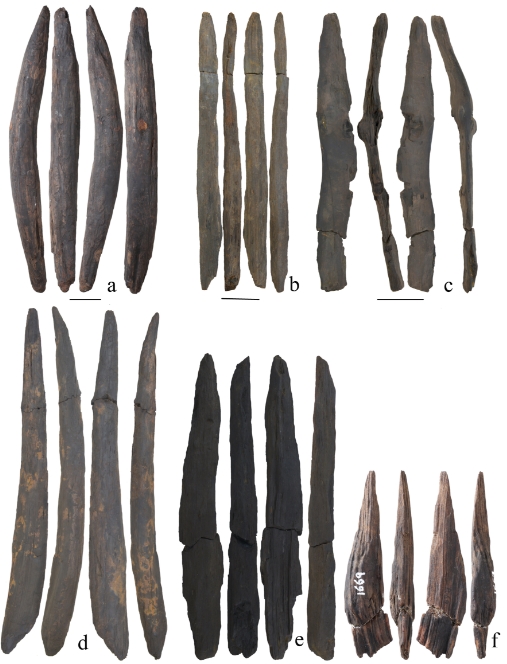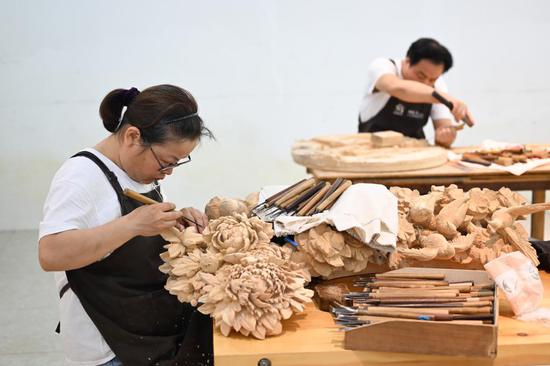
Some wooden tools unearthed from the Gantangqing site in Southwest China Yunnan Province. (Photo/Courtesy of the archaeological team of the site)
An assemblage of 35 wooden tools dating back to 300,000 years ago were unearthed from the Gantangqing site in Southwest China's Yunnan Province, according to a paper published in the international journal Science by the site's archaeological team on Thursday.
The wooden tools include digging sticks and small, intact, hand-held pointed tools. Nineteen of the wooden artifacts bear clear cut and scrape marks resulting from branch trimming, shaping, and sharpening, providing definitive evidence of human modification and use.
The wooden tools from Gantangqing site are the earliest known in East Asia, filling a significant gap in the study of wooden artifacts from the Paleolithic period in China. They are vital for exploring the origins, manufacturing techniques, functions, and evolutionary development of wooden tools.
Soil residues found on the tips of most tools allowed researchers to extract plant starch grains, indicating that the primary function of these tools was to dig for edible underground plant roots and tubers.
This discovery suggests that wooden implements played a key role in hominin survival and adaptation in Middle Pleistocene East Asia, according to the paper.
In addition to wooden tools, the site also yielded numerous stone artifacts, including cores, flakes, scrapers, and pointed tools, primarily made from small flint nodules.
Discovered in 1984, the Gantangqing site is located in Jiangchuan county of Yunnan, on the western slope of a hillside next to a stream, approximately 5 kilometers south of Fuxian Lake, at an elevation of 1,836 meters.
The ancient inhabitants of Gantangqing lived in a warm and humid tropical to subtropical environment, characterized by abundant water and vegetation, dense forests, and a rich diversity of animal species—conditions ideal for early human survival.


















































 京公網安備 11010202009201號
京公網安備 11010202009201號